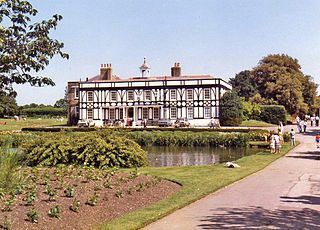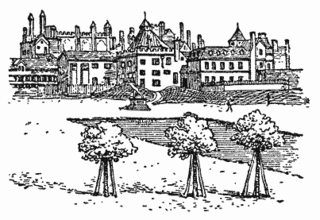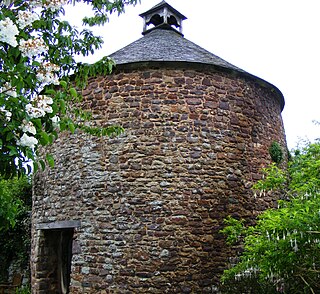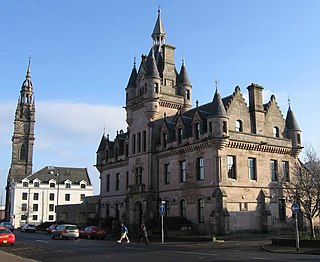 W
WAbbey Farmhouse is a detached house in Montacute, Somerset, England, which incorporates the gateway of the medieval Montacute Priory. It was built in the 16th century and has been designated as a Grade I listed building.
 W
WBroomfield House is a building of historical interest located in Broomfield Park, Palmers Green, in the London Borough of Enfield. Built during the 16th century, it was damaged by fires in 1984 and 1994, and is currently awaiting restoration as part of the English Heritage Restoration Programme.
 W
WThe Cockpit-in-Court was an early theatre in London, located at the rear of the Palace of Whitehall, next to St. James's Park, now the site of 70 Whitehall, in Westminster.
 W
WCraignethan Castle is a ruined castle in South Lanarkshire, Scotland. It is located above the River Nethan, a tributary of the River Clyde, at NS816464. The castle is two miles west of the village of Crossford, and 4.5 miles north-west of Lanark. Built in the first half of the 16th century, Craignethan is recognised as an excellent early example of a sophisticated artillery fortification, although its defences were never fully tested.
 W
WDunderave Castle is an L-plan castle built in the 16th century as the Scottish seat of the MacNaughton clan.
 W
WThe Dovecote in Dunster, Somerset, England was probably built in the late 16th century. It has been designated as a Grade II* listed building and Scheduled Ancient Monument.
 W
WThe Garrick Inn is a pub in Stratford-upon-Avon, England, located at 25 High Street, next door to Harvard House. It is reputedly the oldest pub in the town. The Garrick is located along Stratford's Historic Spine.
 W
WQueen Elizabeth's Hunting Lodge is a Grade II* listed former hunting lodge, now a museum, on the edge of Epping Forest, at 8 Rangers Road, Chingford, London E4, in the London Borough of Waltham Forest, near Greater London's boundary with Essex.
 W
WArchitecture in early modern Scotland encompasses all building within the borders of the kingdom of Scotland, from the early sixteenth century to the mid-eighteenth century. The time period roughly corresponds to the early modern era in Europe, beginning with the Renaissance and Reformation and ending with the start of the Enlightenment and Industrialisation.
 W
WScottish Baronial or Scots Baronial is an architectural style of 19th century Gothic Revival which revived the forms and ornaments of historical architecture of Scotland in the Late Middle Ages and the Early Modern Period. Reminiscent of Scottish castles, buildings in the Scots Baronial style are characterised by elaborate rooflines embellished with conical roofs, tourelles, and battlements with machicolations, often with an asymmetric plan. Popular during the fashion for Romanticism and the Picturesque, Scots Baronial architecture was equivalent to the Jacobethan Revival of 19th-century England, and likewise revived the Late Gothic appearance of the fortified domestic architecture of the elites in the Late Middle Ages and the architecture of the Jacobean era.
 W
WThe Stonehaven Tolbooth is a late 16th-century stone building originally used as a courthouse and a prison in the town of Stonehaven, Aberdeenshire, Scotland. Constructed of local Old Red Sandstone, the prison probably attained its greatest note, when three local Episcopalian clergymen were imprisoned for holding services for more than nine people. Lying midway along the old north quay of the Stonehaven Harbour, the present day Tolbooth serves as a history museum with a restaurant on the floor above the ground floor. It is a category A listed building.